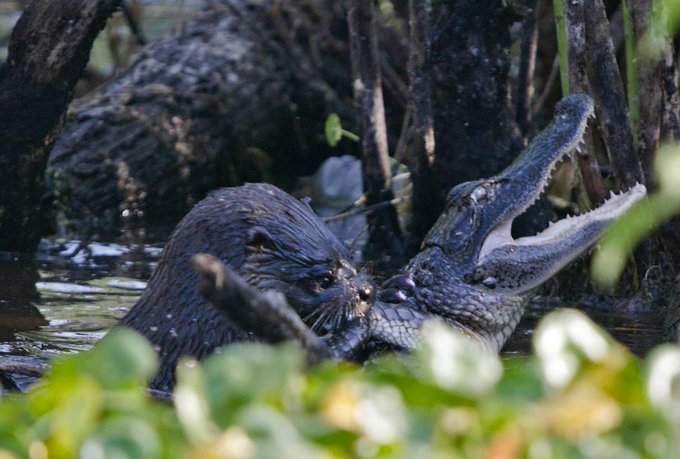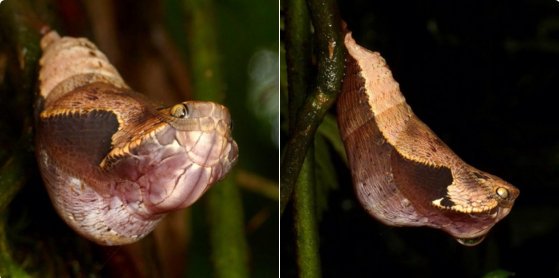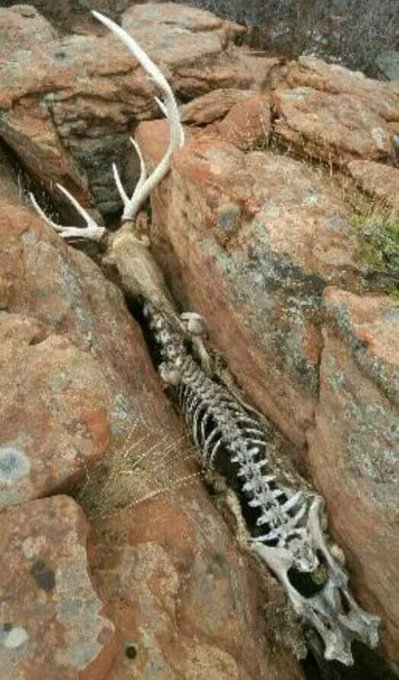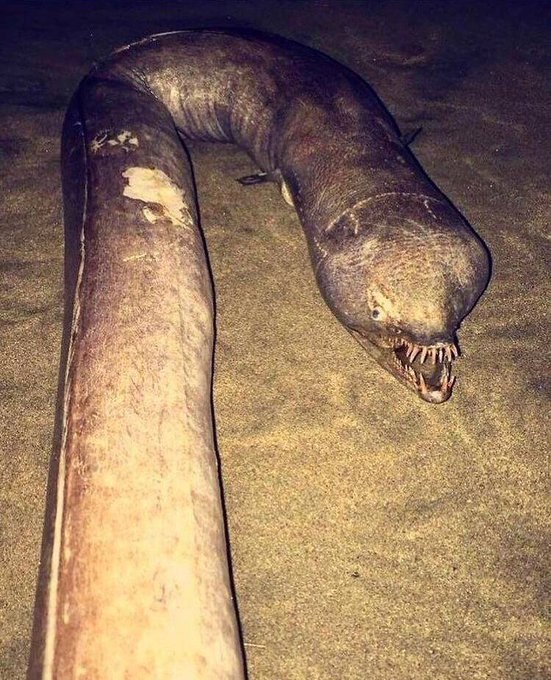Proof That Nature Is Hardcore

August 11, 2025
•19 min read
Check out for proof that nature is hardcore!
Nature is the wild and wonderous home of so many things, like beautiful butterflies, pretty orchids, and super cute baby seals. But as lovely as nature can be, it also has a much darker side. For every adorable seal pup, there’s a bird with a horrifying mouth full of nightmares. For every butterfly, there’s a monstrous sea creature lurking in the ocean. And for every blossom, there’s a deadly tree covered from root to branch in inch-long thorns! With so much badass flora and fauna out there, it’s time to take a look at some of the darkest and most metal discoveries in the natural world.
Parasitic Wasps
Everyone hates wasps; there are no arguments there. But some parasitic wasp species are so savage that they once had devout theologians questioning if a benevolent god could have really created them! So, what is it that makes these bugs so brutal? Well, it might have something to do with the fact that the female lays her eggs under the skin of living caterpillars. The creature then unknowingly incubates the eggs inside its body until the hatchlings chew their way out through its skin!
Despite the trauma, the caterpillar survives, or at least it does initially. The wasp larvae then take over the mind of the caterpillar through a cocktail of chemicals they emit. This forces the caterpillar to spin cocoons for the larvae, all while using its hollowed-out body to protect them like some kind of zombie bodyguard! The tiny wasps eventually emerge from their cocoons and fly away, leaving the caterpillar to starve, and the whole horrifying cycle starts again. After that, you can see why those theologians decided there was no god.The Zombie Virus
If flesh eating, mind-controlling wasps were too hardcore for you to stomach, be aware of the Cordyceps genus, also known as the Zombie fungus. Some of you might actually recognize that name from the video game "The Last of Us" which sees Cordyceps-infected humans bumbling about, sprouting huge, deformed fungi all over their bodies.
While this game is pure science fiction, the real Cordyceps fungi actually does take over the bodies of living creatures! Spores of this parasitic fungus attach or infiltrate the exoskeletons of foraging insects like ants. It slowly invades their bodies and their minds, before compelling its host’s infected brain to climb up to a vantage point about 10 inches off the ground. There, as the spores grow and feast on the insects innards, it forces the ant to grip the stem and wait, gruesomely, for its death. Only then does the fruiting body of the fungus erupt, turning the corpse into a launch pad for brand-new spores!Otters
These charismatic members of the weasel family don’t look like they could hurt a fly. But several species of this family have a hardcore secret hidden up their furry sleeves. Because they share their worldwide wetland habitats with dangerous predators, they’ve developed an impossibly ballsy defense. In large groups, they surround and, astoundingly, bully approaching predators such as crocodiles.
Although, they don’t just bully their crocodilian neighbors. North American River Otters are at the top of the food chain in their natural habitats, chowing down on everything from fish and amphibians to small alligators!This photo exploded on #socialmedia last week: an otter eats an alligator at Lake Woodruff NWR. #Florida
Volcano Snails
Snails aren’t typically seen as hardcore animals, but there’s one hard exception to the rule. Meet the Scaley Foot Snail, or Sea Pangolin, which has evolved a shell made out of iron sulphide. For those of us that don’t speak science, this snail has a shell that’s literally made out of iron!
Wildebeest
Anyone who’s seen Disney’s Lion King will know that the most heart-racing part of the film is when the wildebeest start stampeding down that impossibly steep ravine! While the cartoon makes this scary scene look a little exaggerated, it’s actually based on real wildebeest’s death-defying behavior.
Every year, in one of the largest annual migrations on earth, approximately 1.2 million Serengeti wildebeest begin to move in search of greener pastures and fresher water. But as they approach the Mara river, the herd seems to abandon all sense of sense! Instead of crossing at a point where the river is close to the shoreline, millions of wildebeest scuttle down the impossibly steep cliffs, kamikaze-ing themselves into the rushing water below! Some don’t even wait until the cliff is remotely close to the water, and hurriedly launch themselves onto the ground instead!Octopus
The hilariously squishy, jelly-like appearance of an Octopus, and other soft bodied cephalopods, may make you think they’re not all that dangerous. But despite their looks, these eight-armed creatures are actually some of the most devious predators in the ocean. Because when it’s time to hunt, they literally leap into action.
Hardcore Camouflage
Animal camouflage has developed over the course of millions of years to help them blend into their scenery, be it to avoid predators, or hide in plain sight of prey. While some use this amazing ability to disguise themselves completely, others have developed a crazy camouflage tactic that, ironically, stands out!
At first glance, the brightly colored Atlas moth appears as big as it is colorful. With its wingspan able to stretch almost 11 inches across, it’s pretty hard not to notice! But on closer inspection, the drooping tips of its wings incredibly resemble two snake heads. And that’s not by mistake!This caterpillar is one of the best snake mimics ever! (Photo Andreas Kay)
Honey Buzzards
Most people have heard of the Honey Badger, which was named by the Guinness Book of World Records as the world’s most fearless animal. Their ¼ inch thick hide makes them impervious to the stings of dangerous Africanized honeybees, allowing them to boldly break into hives and lap up the honey with ease. But they’re not the only animal that dares to brave these seriously painful stings!
Honey Buzzards also swoop in and attack exposed hives, but instead of going for the sweet golden treat, they pluck out the eggs and larvae stored in the honeycomb. And this diet means they attack both bee and wasp nests alike! How hardcore!Elk Locked Together
Elk may look majestic, but when it comes to mating season, the males transform into 700 lb bulldozers, with their antlers becoming giant spiked weapons attached to their skulls. They compete for the right to mate with females by clashing their heads together to assert dominance. However, the fights can come with unexpected consequences!
Two bull #elk locked together. RT if this is just bizarre!
Buffalo Boss
Elk and deer aren’t the only animals that like to lock horns to settle disputes. African Buffalo also battle it out to establish who gets the right to mate with the ladies, but they butt heads a little more literally. In adult males, the horns of these huge beasts join in the middle of their head. This helmet-like plate is called a boss, which the buffalo use to ram their opponents head-on with.
Considering they can run up to 35 mph and weigh up to 1,840 lbs, that’d be like watching two small cars collide! So, the thicker the buffalo’s protective boss, the more likely they are to be the boss!Stuck Deer
Anyone who’s ever seen the film 127 Hours will know just how terrifying being pinned against a rockface in the middle of no-where must be. Spoiler alert: James Franco made it out ok, but a poor deer, who suffered a horribly similar fate, wasn’t as lucky.
Ni en mil maneras de morir hemos visto esto.
Predator Vs Porcupine
It takes some serious kahuna’s to mess with a porcupine. These large rodents are covered in sharp, pointy spines, known as quills, to protect them from predators. And like that didn’t make them the most hardcore coats in the world, each quill is also covered in maliciously microscopic fishhook barbs. So, should any predator try its luck, the quills detach and embed themselves painfully in its flesh!
And not only are they painful to remove, but any movement can actually force the quills deeper into the tissue. And this is something that predators, like the snake below, find out the excruciatingly painful way!Snake tries to eat porcupine, gets pierced by spikes. ladbible.com/now/weird-snak…
Pelicans Swallowing Fish Whole And Regurgitating
If Finding Nemo taught us anything, it’s that pelicans are regarded as funny, water-based birds that dopily scoop up fish using their famously wobbly throat pouches. But watching these birds in real life is the farthest thing from family friendly entertainment. While their main diet consists of fish, crustaceans, and other marine animals, they’ve also gobble up smaller birds!
In some cases, this bizarre bird-eating behavior can be explained by a limited food supply, which forces the pelicans to eat whatever they can find. But sometimes, even with an abundance of food, they’ll inexplicably choose to chow down on a smaller species!Sandbox Tree
Ever wondered what a tree designed by Satan would look like? Well, there’s a good chance it’d be South America’s impossibly painful looking Sandbox Tree.
Able to grow up to 130 ft tall, these grey barked trees are covered from root to tip with gigantic, cone-shaped spikes that each measure up to an inch long! These bulbous barbs deter any hungry herbivores from snacking down on it as it grows. The spikes also stop animals clambering up into its branches to eat its precious berries, but while its fruits may look like little pumpkins, they’re actually ticking timebombs! When fully mature, they explode outwards and fling their hard, flat seeds off in every direction at speeds of up to 150 mph!Spikes In Sea Turtle's Mouths
It might not look like at first glance, but the footage below shows the throat of the weirdly adorable sea turtle! Those squishy spikes are called papillae, and they’re not just found in their throats. Opening up the mouths of many species of sea turtles reveals these jagged holes of doom, lined with hundreds of those fleshy spines!
Geese Mouth
Geese, known justly as the worst animals on the planet, also have some of the most horrifying mouths in the world. Just about everyone has been hissed at by one of these aggressive animals! But if you’ve ever dared to get closer, you might have spotted the serrated edges lining the beaks and tongues of these vicious, walking vuvuzelas.
They look like rows of tiny, terrifying teeth, although they’re not. Scientists believe birds did have teeth between 80 and 100 million years ago, though these were gradually bred out until only small, spikey serrations of cartilage, called tomium, remained. But don't be fooled by the word ‘cartilage’, because tomium isn't soft or bendy. It’s a bone hard material that these omnivorous geese use for ripping vegetation and gripping prey, so they can easily draw blood from a human if they land a well-timed bite! Like Geese weren’t bad enough already.Snapping Turtle
Snapping turtles come in all shapes and sizes; from the common variety that can reach, on average, up to 14 inches in length, to the truly gargantuan Alligator Snapping Turtle that can measure in up to 2 ft long! But no matter their size, the infamous bite of any snapping turtle is enough to make full grown women scream in fear.
Killer Cassowaries
Standing up to 6ft 6 inches tall, and weighing up to 132 lbs, the brilliant blue and red plumage of the huge, flightless Cassowary is certainly a striking feature.

Snaggle-Toothed Snake-Eel
On the day that mother nature decided to create the Aplatophis Zorro, also known as the Snaggle Toothed Snake-Eel, she must have been feeling pretty Satanic.
OK, all you exceptional eels & elvers, it's time for the #EelOrNoEel revEEL. This week's featured creature is a true #Eel . Say hello to the Snaggle-toothed Snake Eel ( #Aplatophis_zorro ).
The Snaggle-Toothed Snake-Eel
The Ocean’s Apex Predator
Thanks to pop culture, Great White Sharks have been hyped up as the most metal predators prowling our planets oceans. But while they’re often billed as unstoppable hunting machines, there’s an even bigger predator lurking beneath the waves that can turn this feared fish into lunch: Killer Whales.
Also known as Orcas, these black and white behemoths can reach up to 32 ft in length, which is about the size of a standard school bus, and over 10 ft bigger than a large Great White. And they don’t just attack using their size, but also their smarts! The piebald pack animals work together in small groups to tire out and overpower the shark!



























